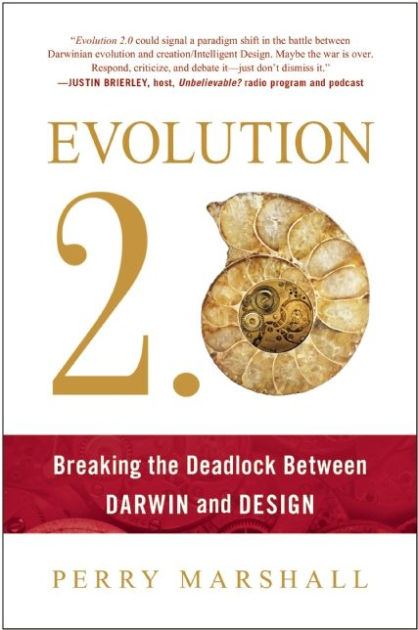|
home | what's new | other sites | contact | about |
|||
|
Word Gems exploring self-realization, sacred personhood, and full humanity
Perry Marshall's an electrical engineer / computer programmer
return to "Evolution" main-page
Editor's note: The following is from Perry Marshall's book, Evolution 2.0: Breaking the Deadlock between Darwin and Design
When one company buys another, systems and operations of the two firms are combined, with duplicate functions eliminated. “Nature initiates the same process of integration. In biology, the process is called Symbiogenesis [symbio = cooperation, genesis = creation]… Different kinds of cells merge to create new cells, or two organisms merge to create a new one – bringing their reproductive cycles and their physiology together in lockstep.” “Symbiogenesis can create sudden, quantum leaps. Symbiosis is one of the most pervasive themes in all nature. Consider how many plants and animals live in mutual dependence – like bees being interdependent with flowers. This pattern of symbiosis goes far deeper than this; we find it at the cellular level in all plants and animals.”
Fred Fungus and Alice Algae took a Lichen to each other. Fungus and algae live in such close cooperative union that a virtual third organism, lichen, is created. While it is possible to divide lichen into the original parents, in cases of advanced symbiogenesis, a separation is not possible. Editor’s note: During a trip to Glacier National Park forty years ago, a tour guide humorously explained the nature of lichens with the “Fred Fungus” and “Alice Algae” analogy.
Discoverers “Symbiogenesis was first described in detail by Russian scientist Boris Polyansky in his 1926 book... [but] it wasn’t translated into English for 84 years… American biologist Dr. Lynn Margulis excavated the theory of Symbiogenesis, extended it, and introduced it to the West.”
Is Symbiogenesis just a theory, or has it been produced in the lab? “Dr. Kwang Jeon … did an experiment where tens of thousands of bacteria took up residence inside Amoeba proteus organisms. A fierce parasitic attack ensued, killing almost all the amoeba. But in the space of a year, amoeba and bacteria entered into symbiosis. Both modified expression of their genes as necessary to support the mutual dependence. Dr. Jeon learned how to reliably trigger symbiotic cell mergers between amoeba and bacteria. It took 200 generations, about 18 months, for the cells to become fully interdependent. After that, removal of either symbiotic partner proved fatal to both.”
It is highly likely, indicated by DNA sequences, that chloroplasts of plant cells came to be via Symbiogenesis. “In high school biology you probably learned that chloroplasts are the part of the plant cell the conduct photosynthesis. Chloroplasts are separate from the cell itself. They even have their own DNA. Technically, they are cyanobacteria (blue-green algae) living in symbiotic relationship with a host cell. Symbiogenesis theory suggests that chloroplasts originated when a protozoan ingested cyanobacterium. Unlike the lichen, chloroplasts cannot be separated from the host plant cell and survive.”
It is also highly likely that mitochondria of animal cells began via Symbiogenesis. “A similar symbiogenesis event made animal cells possible. Mitochondria are the organelles inside your cells that are responsible for respiration; they convert oxygen into energy. A mitochondrion is a bacterium that was ingested by a complex cell and became a system for respiration. Mitochondria have their own DNA just as chloroplasts do.”
“There is nearly universal agreement that both chloroplasts and mitochondria originated through Symbiogenesis. This is firmly established by ribosomal RNA sequencing.” “Today we see that the DNA sequences of bacteria and mitochondria, and cyanobacteria and chloroplasts, are so strikingly similar that the conclusion is unavoidable. Body parts and code are virtually identical to their symbiotic ancestors.” “Cell mergers overturn the Darwinian doctrine of a thoroughly gradual, continuous transition from one species to another. Instead, [evolution, led by Symbiogenesis,] proceeds through a chain of ‘Eureka’ moments when organisms merge successfully." "This would explain why the fossil record so often shows a series of sudden jumps. It’s also one reason why there aren’t nearly as many transitional forms as Darwin predicted. There is no transitional form between algae and lichen, and there is no half-merger of two cells. Nature loves shortcuts.”
it's cooperation, much more than competition “Nature’s depiction as ruthless and bloody [the classic example of the lion eating the gazelle]… is overstated. Cooperation and symbiosis are so ever-present that we tend to look right past them and only notice the competition.”
|
|||
|
|
